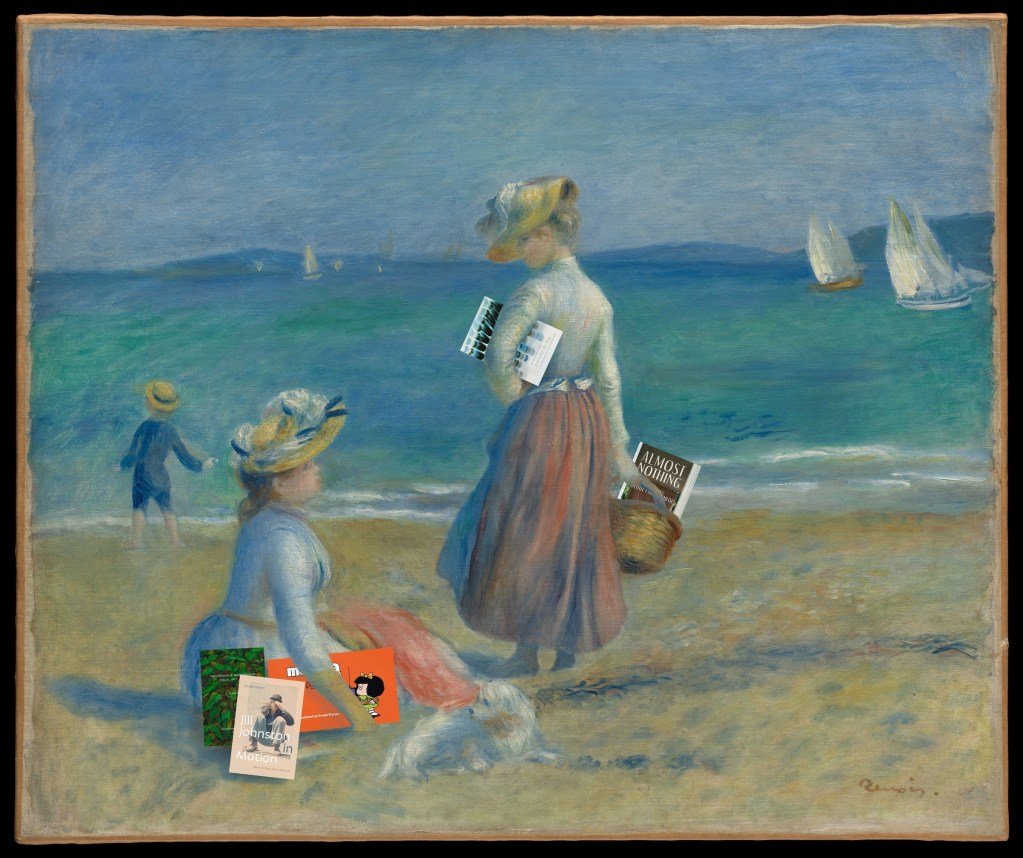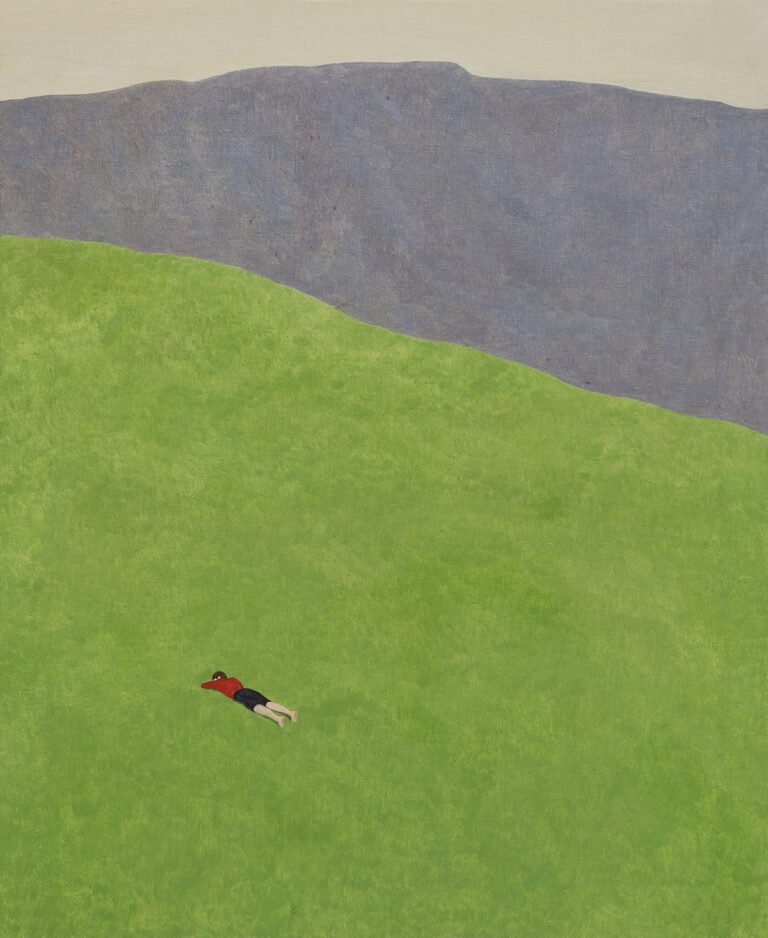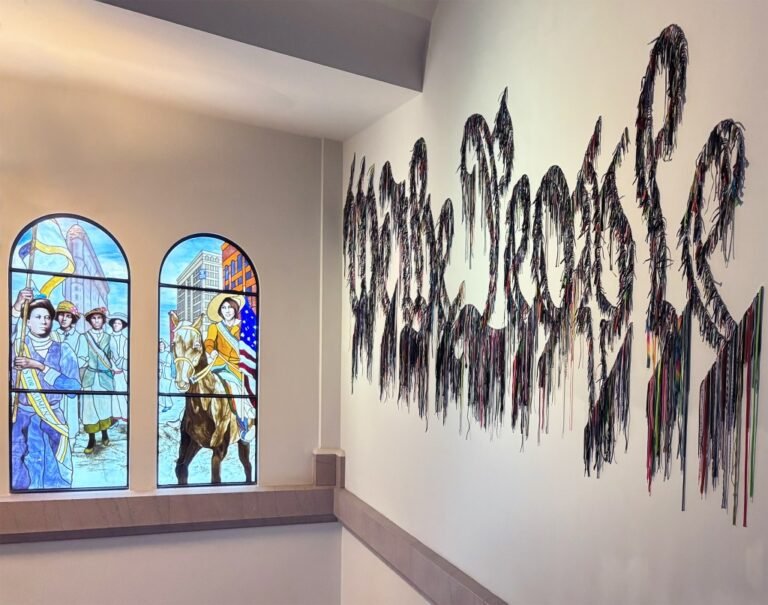

Take a moment to recall the last time you heard the sound of the ocean. Maybe it’s been years, or perhaps you’re listening to its roar right now. Wherever this summer brings you, I hope you’ll find something meditative in the pages of this month’s art books. A new title on Edith Farnsworth, owner of the eponymous glass house, weaves the subject’s life together with that of the author, making for a captivating read. I also recommend digging into the refreshingly candid essay collection Last Artist Standing, in which artists over 50 open up about the joys and struggles of making work amid personal, financial, and creative hurdles — a gem of a resource during a time when artists continue to defy the art world’s inequities. Meanwhile, News Editor Valentina Di Liscia reflects on a new English translation of the beloved Mafalda comics, which she writes offers the precise humor and politics we need right now. We’ve got that and much more to ruminate on below. —Lakshmi Rivera Amin, Associate Editor
Mafalda: Book One by Quino, translated by Frank Wynne

Mafalda, the outspoken six-year-old sage who detested soup and questioned everything, was printed on my bedsheets when I was little, and I like to think that’s how I acquired my childhood penchant for arguing with adults. The comic creation of late Argentine cartoonist Quino (Joaquín Salvador Lavado), Mafalda and her entourage — from her friend Susanita, the aspiring homemaker, to Mamá, Papá, and little brother Guille — are beloved all over Latin America, but less well-known in the United States. A new five-volume series gathers a collection of the comics translated into English by Frank Wynne, engaging new audiences with her wide-eyed curiosity, sassy retorts, and insatiable desire to understand the world. Though Mafalda’s brand of dry humor won’t always land with US readers, her critiques of politicians, openness to the perspectives of others, and unwavering defense of human rights are universal — and especially timely. —Valentina Di Liscia
Buy on Bookshop | Elsewhere Editions, June 2025
Jill Johnston in Motion: Dance, Writing, and Lesbian Life by Clare Croft

Although Jill Johnston’s 1973 book Lesbian Nation may have announced her lesbian feminism to the world, Johnston began as a dancer and dance critic. In Jill Johnston in Motion, dance historian Clare Croft makes a compelling case that a sense of embodiment learned from dance is present throughout Johnston’s later experimental writing and activism, which was a kind of performance art in itself. An early participant in the Judson Dance Theater and critic and columnist for the Village Voice, Johnston became more outspoken as a lesbian feminist activist as her writing assumed a more performative dimension. Without neglecting the contradictions and blind spots in Johnston’s work, Croft deftly examines the centrality of the body in her queerness and writing practice and considers “writing (and reading) as embodied acts. —Natalie Haddad
Buy on Bookshop | Duke University Press, October 2024
Last Artist Standing: Living and Sustaining a Creative Life Over 50, edited by Sharon Louden

Is there anything more tedious than the myth of a linear artistic trajectory: “emerging” to “mid-career” to, at last, “established”? As artist and educator Sharon Louden points out in the introduction to Last Artist Standing, such mythology fuels so many outdated perceptions about artists’ relationships to success and age. This latest installment in her Living and Sustaining a Creative Life series rejects these fantasies, instead presenting something much more precious and honest — artists over 50 telling their own stories. The trove of intimate, personal essays is as varied as the voices of its contributors, among them Sonya Kelliher-Combs (Iñupiaq/Athabascan), Maren Hassinger, Colleen Coleman, and the late Audrey Flack. Each artist walks us down the path of their singular practices and lives, all bound together by the community they’ve cultivated along the way. —LA
Buy on Bookshop | Intellect Ltd, May 2025
Almost Nothing: Reclaiming Edith Farnsworth by Nora Wendl

Essayist, artist, and architect Nora Wendl takes transparency and visibility to task in Almost Nothing: Reclaiming Edith Farnsworth by asking readers: “What makes a woman believable?” Drawing from over 10 years of archival research, she debunks the patriarchal “sex-and-real-estate myth” of the relationship between Farnsworth and architect Mies van der Rohe tied to the infamous glass house he built for her in the early 1950s. The book includes Wendl’s artworks: photographs that depict her embodied experiences with Farnsworth’s house and ghost as she lives out her own moment of painful exposure, both personally and professionally, while relocating from Chicago to Albuquerque, New Mexico. Glass itself adopts a supporting character role early on in the story, and continues to slowly shapeshift as Wendl traces Farnsworth’s life experiences alongside her own. But this isn’t a generic tale of a woman done wrong by a man, or even of an accomplished female physician-poet who refuses to nurse the overblown yet delicate male ego of an architect. Instead, it’s a harrowing account of what happens when a woman attempts to build her own life. —Nancy Zastudil
Buy on Bookshop | 3 Fields Books, May 2025
Nuyorican and Diasporican Visual Art: A Critical Anthology, edited by Arlene Dávila and Yasmin Ramirez

“Edited by Arlene Dávila and Yasmin Ramirez, this impeccably researched and deeply needed anthology sets the record straight — not only by spotlighting Puerto Rican artists living in cities like New York, Chicago, Philadelphia, and Orlando, such as Rafael Ferrer, Candida Alvarez, Luis “Suave” Gonzalez, Ivelisse Jiménez, and Pepón Osorio, but by documenting their central role in shaping groundbreaking 20th-century postmodern and contemporary art in the United States. Nuyorican artists employed strategies that reclaimed a sense of urgency and spontaneous action, utilizing multiple media and interdisciplinary approaches. They dismantled traditional forms and embraced experimentation, merging performance, conceptualism, and political critique. Not only was the work a reaction to institutional norms, but it was also a call to reimagine the role of art in an increasingly fractured world.” —Alicia Grullón
Buy on Bookshop | Duke University Press, January 2025
More Titles to Read This Month
- Sheila Hicks: A Little Bit of a Lot of Things (Hatje Cantz, July 2025)
- The United Colors of Robert Earl Paige (Green Lantern Press, May 2025)
- Lorna Simpson: Source Notes (Metropolitan Museum of Art, May 2025)
- Caravaggio: 1571–1610 (Silvana Editoriale, May 2025)
- Delcy Morelos (Editorial RM, May 2025)






